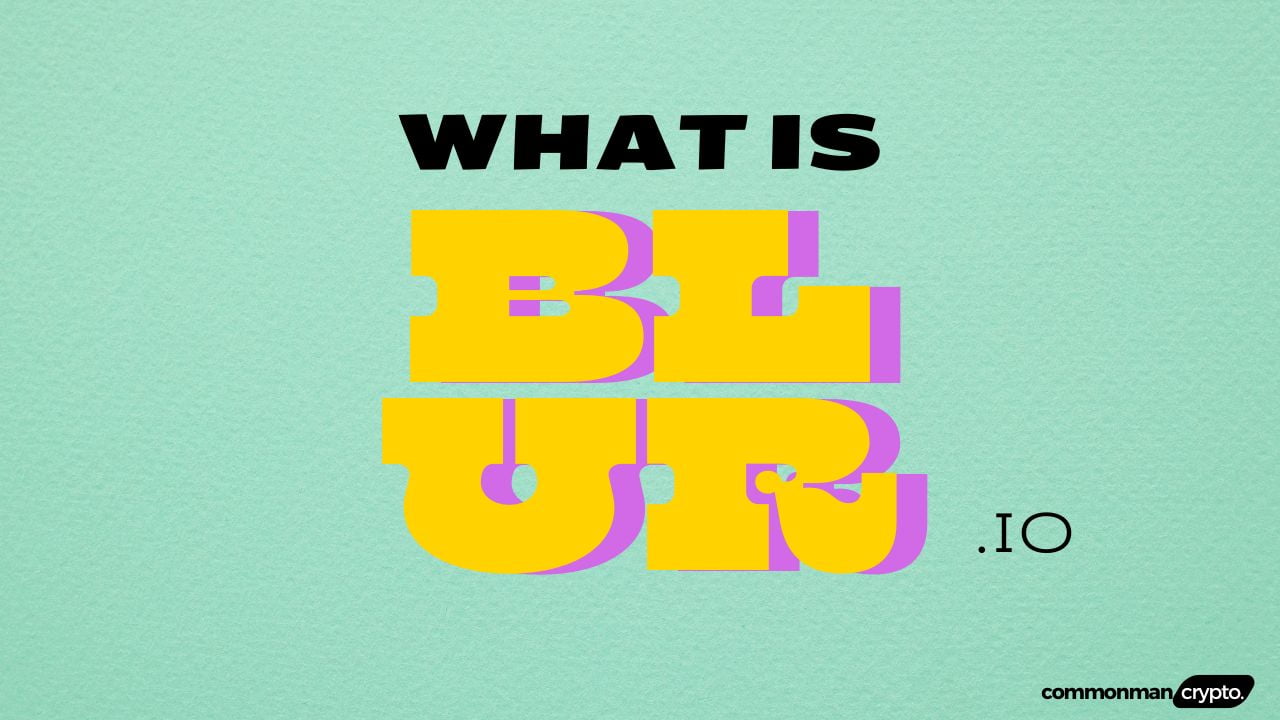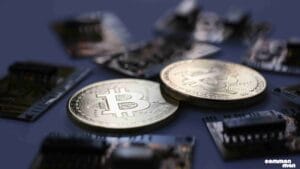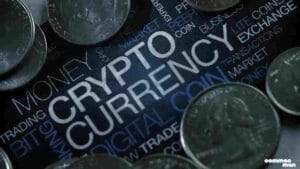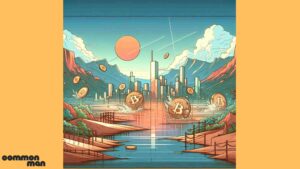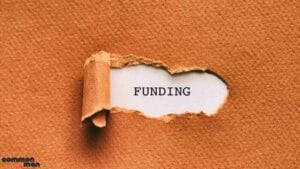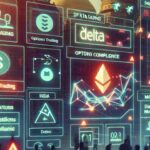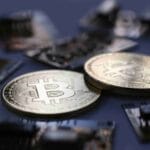(BLUR) Blur is a decentralized marketplace for non-fungible tokens (NFTs) with feeless transactions. It supports crypto borrowing by using NFTs as collateral.
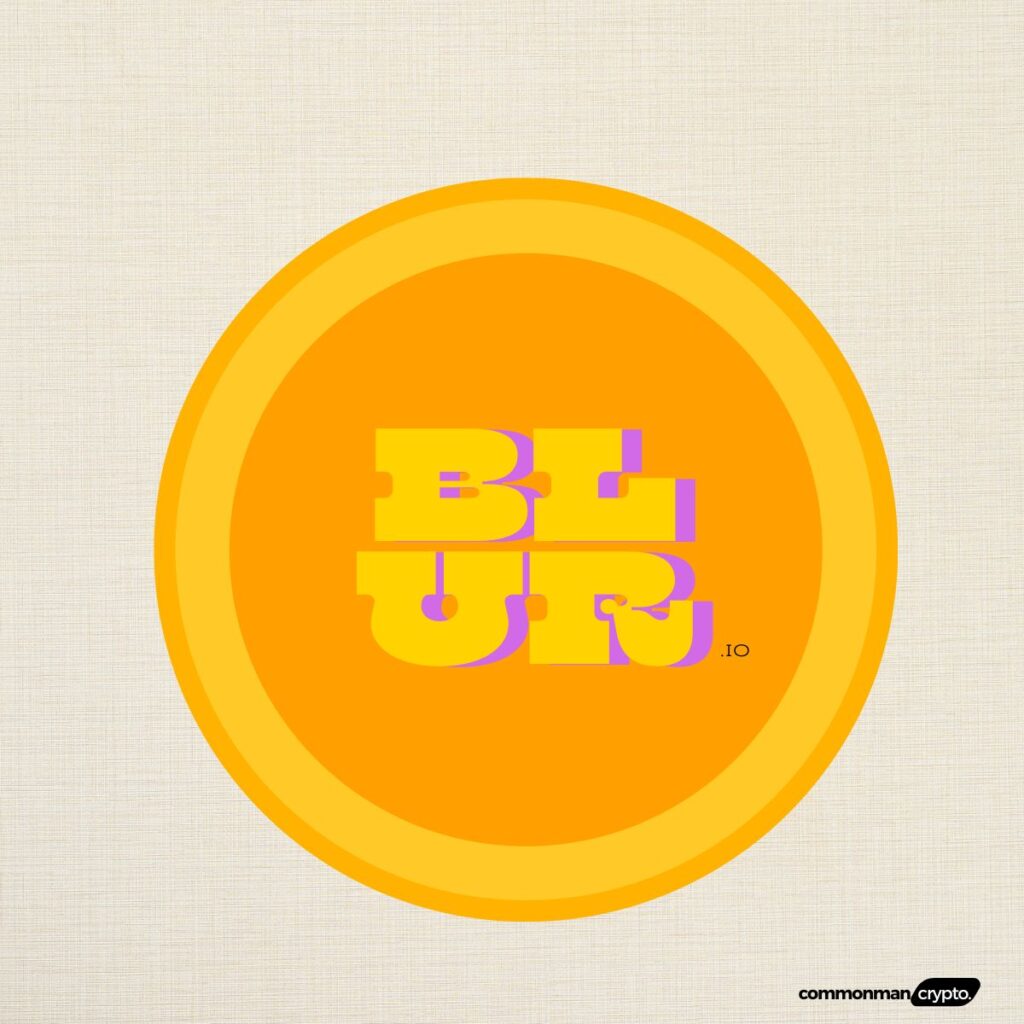
Blur (BLUR) is the native governance token of Blur, an innovative non-fungible token (NFT) marketplace and aggregator platform. Offering advanced features like real-time price feeds, portfolio management tools, multi-marketplace NFT comparisons, and intuitive NFT sweeps comparable to other platforms, its Ethereum-based infrastructure has garnered widespread participant support and even awarded 360 Million BLUR tokens as incentives!
However, in late 2022, a new NFT marketplace emerged and began processing large volumes of transactions. Blur began “flipping” OpenSea weekly beginning in December 2022 and did not look back. Their community-governed platform targeted professional traders while not charging marketplace fees, which garnered increasing user attention as people wanted to trade CryptoPunks and Mutant Apes with them.
By January 2024, Blur had amassed over 75% of all NFT trading volume across crypto. Building upon its foundation by making NFTs collateral assets, the platform created an expanding borrowing/lending economy that outshone those found on other decentralized finance (DeFi) platforms.
Blur is run by a decentralized autonomous organization (DAO) composed of holders of its BLUR token. These community members can submit and vote on proposals according to how many BLUR they own.
What is the History of Blur?
Blur launched in October 2022 with plans to distribute airdrops of BLUR tokens among top platform users. Its founders and developers remain anonymous; Pacman (a Web3 developer) serves as its founder, while Zeneca from ZenAcademy and The 333 Club holds the role of Director. Blur’s team boasts experience from MIT, Citadel, Five Rings Capital, Twitch Brex Square Y Combinator; in fact, it even offered Care Packages before its official launch, offering access to tokens at these airdrops in exchange for beta testing six months prior.
What sets Blur apart from other NFT marketplaces?
Blur is unique among NFT marketplaces by catering specifically to professional traders. It provides an intuitive user experience with user-friendly tools, analytic resources, and features designed for daily interactions between traders. Furthermore, its unique rewards program – where users receive points when listing and bidding on NFTs, which could lead to non-monetary rewards like BLUR tokens – encourages active participation on the platform. Moreover, unlike many platforms, it operates without platform fees while offering optional royalties as an innovative approach, though recent discussions regarding its operations as an innovative approach with active participants have generated debate and heated arguments between traders on its operations and focus.
BLUR airdrop
The BLUR airdrop was an event where Blur distributed their native token (BLUR) to users, totaling an enormous 300 Million tokens in distribution. Instead of sending tokens directly to recipients’ wallets, airdropping transfers them through a separate smart contract. At this point, recipients were given a choice between withdrawing their BLUR tokens from the smart contract or leaving them there to participate in future platform activities – these points could potentially be used for participation in Blast blockchain’s activities upon launch; airdrop was an attempt by Blur to drive user activity and engagement on its platform; its distribution of tokens depended upon how often users interacted with its platform.
How is the Blur community involved in its development?
Blur communities play an integral role in shaping and overseeing its ecosystem. To foster development and ensure sustainable community growth, The Blur Foundation was established to foster community growth while simultaneously supporting a Decentralized Autonomous Organization (DAO). The BLUR token, the native token of the Blur Foundation, empowers community members by allowing them to actively participate in governance. Community members can exert an impactful voice over key decisions about value distribution processes in protocols. Blur DAO involves value distribution within a protocol and includes various committees that streamline operations. The community treasury houses part of the total BLUR token supply . It allows the community to contribute their ideas on its allocation for development features or initiatives that contribute to the long-term sustainability of the Blur protocol.
How was Blur Developed?
Blur was co-founded by developers going by the names Pacman and Galaga online, although these identities were initially kept hidden until eventually revealed as Tieshun Roquerre (Pacman) and Anthony Liu (Galaga). They met while studying at MIT; upon Liu graduating in 2018, Roquerre dropped out (having already dropped out of high school years before), co-founding crypto domain name company Namebase before selling it off to another competitor before creating Blur.
Blur was introduced in San Francisco at the start of 2022, with developers announcing they had received $11 million in seed funding led by investment firm Paradigm, who also backed Namebase. Blur claimed to target pro traders as users, offering incentives such as zero platform fees for high-volume trading activity.
Blur was officially launched in October 2022, with trading volumes rapidly growing. To complement its expanding clientele, in May 2023, Blur unveiled its peer-to-peer perpetual lending protocol in Blend.
How Does Blur Work?
Blur is an NFT marketplace and crypto lending service that uses NFTs as collateral to create incentives for platform engagement.
Blur operates on the Ethereum blockchain as an ERC-20 token secured through Proof-of-Stake, the Ethereum network’s consensus mechanism. Validators confirm transactions using this mechanism by staking 32 ETH to participate in consensus and validating transactions. Blur provides creatives who pay royalties with BLUR tokens as compensation and strives to strike a balance between creators and traders through connecting to X2Y2, OpenSea, and LooksRare (LOOK), among others, as an aggregator and offering various features that enhance NFT trading experiences.
Blur: an NFT Marketplace
Marketplaces exist to connect traders. OpenSea was one of the first such marketplaces dedicated to NFTs, setting standards and community guidelines to facilitate their sale, from listing aesthetics to platform fees for sale transactions.
Blur makes listing their NFTs for sale or placing bids easy when connected to an Ethereum wallet, offering users access to listing or bidding on other NFTs for sale – this is but the first step; its functionality goes further: “collect” and “trade” modes offer detailed charts, tools and ways of displaying transaction data – such as seeing how many are available at given prices or tracking trades over time – plus “sweeping the floor” with multiple inexpensive NFT purchases simultaneously is also an easy feature of Blur.
Blend: An open lending protocol.
Blend (Blur lending) is a peer-to-peer perpetual lending protocol that enables borrowers to use NFTs as collateral against loans they take out through Blend. Collateral is essential in decentralized borrowing/lending models like DeFi, ensuring lenders can recover their funds. Collateral also stimulates an active economy. By making NFTs usable as collateral, Blend allows its borrowers to capitalize on NFTs’ monetary value.
Potential borrowers can list NFTs as collateral, using the protocol to set prices and interest rates they’ll offer prospective lenders. Once accepted by them, NFTs are placed into the vault when lenders transfer loaned funds (e.g. ETH) back to borrowers; hence, the name perpetual loan.
Borrowers can repay their loan’s full value at any time, reclaiming any NFT they used as collateral. Lenders may terminate the contract, triggering a refinancing auction in which the contract is put up for auction with an initial interest rate starting from zero and increasing over time.
If the terms of the new contract appeal to other economy lenders, they could acquire it. Once purchased, they would pay their old lender (who was made whole) full while taking over with the borrower at their new rate. If no new lender comes forward, however, borrowers still have an opportunity to repay their loan in full, failing which they could liquidate and claim NFT collateral from them.
How is the BLUR token utilized?
Holders of the Ethereum-based BLUR token use it to participate in community governance through a decentralized autonomous organization (DAO). Holders can make proposals and vote on them, which can guide the direction of Blur Foundation platforms.
Blur was designed to perform where other platforms fail, namely in the creator royalties category of NFT trading. Blur aims to support creatives by compensating those paying royalties through BLUR tokens as part of its service offering. While designed more for experienced traders, newcomers to the NFT market can utilize Blur’s features with some effort in learning how it works; similarly, its differentiating features could potentially assist traders in optimizing their strategies.
Economics and distribution should go hand in hand.
At its inception, 3 billion BLUR tokens were issued as part of its total supply. Of this total supply, 51% was allocated to community members, while 29% went toward Blur’s contributors and developers, 19% to investors and advisors, with only 1% reserved for advisors. Of the community allocation, 12% was released as an airdrop to NFT marketplace traders. In comparison, the other 39% became part of a Treasury for incentive programs – these non-community tokens being subject to vesting over four to five years until February 2027.
How does Blur support NFT creators & traders?
Blur offers features such as batch shelf and floor-sweeping transactions to facilitate multiple transactions simultaneously. Blur integrates with other non-financial marketplaces seamlessly to enable users to explore and transact across various platforms seamlessly. Blur’s integration aims to boost liquidity and ease of use for users by making NFT transactions simpler and facilitating peer-to-peer lending platforms like Blend easier for all. This platform aims to enhance the liquidity and accessibility of NFTs by offering collectors affordable access to high-value NFTs at reduced upfront payments. Blur is a financial model designed to facilitate access to the NFT market for users seeking premium collections while offering user-friendly fees, including customizable royalty rates. Blur’s innovative approach to royalty rates illustrates its goal to offer cost-effective trading environments tailored to meet the varying needs of NFT traders. Blur recognizes active users for their contributions to providing liquidity and trading activities on its platform through a recognition program in order to foster an inclusive NFT trading environment and enhance the platform ecosystem.
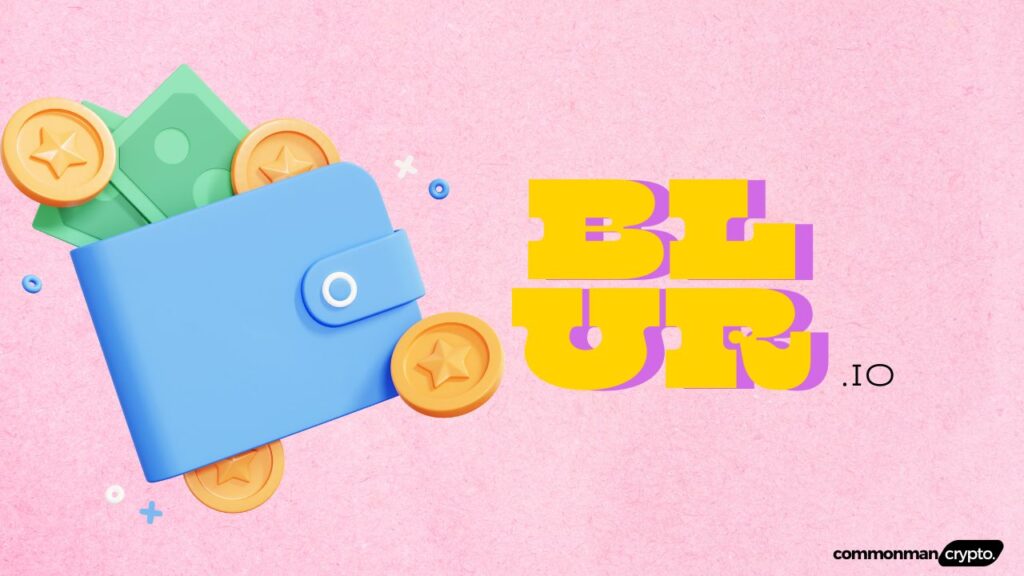
What are the risks involved in participation in the Blur ecosystem?
Participation in the BLUR ecosystem carries many inherent risks, including market volatility. Cryptocurrency values can experience sudden, drastic shifts determined by factors like market sentiment, regulatory developments, and technological advancements – with regulatory uncertainty often being one of the biggest risk factors. BLUR faces many regulatory and technological risks, which must be managed carefully for its adoption and viability. These risks include issues in the code, network attacks, or technical glitches that could compromise the security or functionality of the platform, as well as increased fees. Platforms may charge fees on top of gas fees, which could diminish overall non-monetary benefits. Before engaging with the BLUR ecosystem, conducting thorough research, analyzing market trends, and seeking professional advice about the cryptocurrency landscape is vital.
Conclusion
- Blur is a platform for trading non-fungible tokens (NFTs) designed specifically for professional traders.
- The platform’s NFT market can also be leveraged through Blend’s perpetual lending protocol; this enables borrowers to use their NFTs as collateral against loans on this lending protocol.
- BLUR tokens are used for community governance through decentralized autonomous organizations (DAO).

